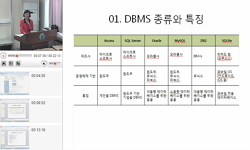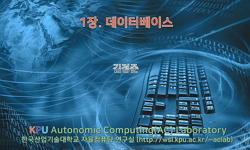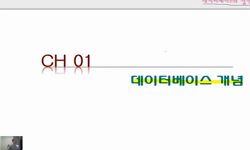This doctoral dissertation is based on Jiam ilgi, the diary of Yun Yi-hu (pen name; Jiam, 1636-1699), a nobleman who lived in the Honam (i.e. Jeolla) region of Joseon Korea in the late 17th century. Yun Yi-hu was the grandson of scholar-poet Yun Seon-...
http://chineseinput.net/에서 pinyin(병음)방식으로 중국어를 변환할 수 있습니다.
변환된 중국어를 복사하여 사용하시면 됩니다.
- 中文 을 입력하시려면 zhongwen을 입력하시고 space를누르시면됩니다.
- 北京 을 입력하시려면 beijing을 입력하시고 space를 누르시면 됩니다.
https://www.riss.kr/link?id=T15384743
- 저자
-
발행사항
城南 : 韓國學中央硏究院, 2019
-
학위논문사항
學位論文(博士)-- 韓國學中央硏究院 : 인문정보학전공 2019. 8
-
발행연도
2019
-
작성언어
한국어
- 주제어
-
KDC
005.75 판사항(5)
-
발행국(도시)
경기도
-
형태사항
xiii, 275 p. : 삽화 ; 26 cm
-
일반주기명
指道敎授 김현
참고문헌: p. 265-171 -
UCI식별코드
I804:41054-200000229128
- 소장기관
-
0
상세조회 -
0
다운로드
부가정보
다국어 초록 (Multilingual Abstract)
This doctoral dissertation is based on Jiam ilgi, the diary of Yun Yi-hu (pen name; Jiam, 1636-1699), a nobleman who lived in the Honam (i.e. Jeolla) region of Joseon Korea in the late 17th century.
Yun Yi-hu was the grandson of scholar-poet Yun Seon-do and the father of scholar-painter Yun Du-seo. Jiam ilgi is the daily record of his life after his retirement from office in 1692 until his death in 1699, covering 95 months in total. Many aspects of life experienced by countryside literati during the later period of the Joseon dynasty are covered in Jiam ilgi, including farming, weather, visitors, trade, slaves (nobi), communication, travel, exile, literature, disease, medicine, land reclamation, architecture, landscaping, and feng shui, Much information was discovered which can be looked at in connection with historical records such as the Joseon wangjo sillok and the Seungjeongwon ilgi. In this way, by extracting data from Jiam ilgi, which contains abundant information on traditional times, compiling a semantic database, and implementing data visualization results in various contexts, it is possible to recreate and explore various aspects of Yun Yi-hu’s life in the digital environment.
The semantic database compilation methodology for this study, i.e. the overall process of designing an ontology for humanities data, extracting data from target resources based on said ontology design, implementing visual results based on the compiled databases, and exploring the humanistic implications of sharing relevant data in the online environment, was jointly conducted by humanities researchers over a number of years. This dissertation’s author was directly and indirectly involved in such studies, and digital data-based research forms learned during this were applied to this study.
In addition, the various approaches and interpretations of the Jiam ilgi text applied to this study are based on the efforts of several researchers involved in the close reading and interpretation of the data over a period of nearly five years. As a member of the Jiam ilgi Study Group, the author participated in the traditional interpretation of the classical Chinese text, developed a method to utilize the results as more useful collaborative data, and designed a format for the resources that could contribute to this purpose. The joint researchers cooperated in organizing the results of each of the translations according to the data format proposed by the author, and as a result, basic text data archives could be built to enable the use of Jiam ilgi text as digital data.
The main content of this dissertation focuses on the author’s contribution as a digital humanities researcher to the compilation of the Jiam ilgi database, and on the use of Jiam ilgi, transformed into data, as a more expanded collaborative research resource. As this dissertation is the academic accomplishment of an individual degree recipient, the content of the dissertation focuses on the distinctive contributive work carried out the author and the proof of this work’s academic significance. However, considering that the author participated in the interpreting and translating of the data as a member of the Jiam ilgi Study Group, the greater significance of this study is that it was conducted jointly with various humanities researchers who read the original data together with the goal of deepening the various points for investigation and academic knowledge that arose from the compilation and construction of data.
Within the context of this collaborative study, some 80,000 semantic data were extracted from Jiam ilgi in a way which actively reflected the author’s points of investigation. Based on this, databases in various formats, such as XML, Wiki DB, RDB, Graph Database, and LOD, were compiled. Through utilizing these variously compiled databases, the relationships between the data could be viewed from a variety of angles, and the author focused on four kinds of data in particular: Person, Place, Slave, and Lifestyle. Through the personal relationship network implemented from the Person Data, the scope and characteristics of Yun's relationships with relatives and acquaintances were explored in various ways. Various types of electronic maps implemented using Place Data were used to attempt a geographical exploration of Yun's sphere of life and some long-distance trips. And, by looking at Slave Data in conjunction with the Lifestyle Data, clues as to what role nobi played in Yun's life were also discovered.
Such knowledge is only a small fraction of the total knowledge found from the semantic database. In the future, if the semantic database of Jiam ilgi is opened and shared via the Web, it is believed that various knowledge leading to research on the Joseon period can be revealed by researchers in various fields. The data used in this study and the resu lts of visualization of data in various formats are all compiled on the author's thesis Wiki page (http://dh.aks.ac.kr/~red/wiki/index.php/Jiam Diary).
국문 초록 (Abstract)
본 연구는 17세기 말 호남에 거주했던 양반 윤이후(尹爾厚)의 『지암일기(支菴日記)』를 대상으로 한다. 윤이후는 고산(孤山) 윤선도(尹善道)의 손자이자 공재(恭齋) 윤두서(尹斗緖)의 친부로...
본 연구는 17세기 말 호남에 거주했던 양반 윤이후(尹爾厚)의 『지암일기(支菴日記)』를 대상으로 한다. 윤이후는 고산(孤山) 윤선도(尹善道)의 손자이자 공재(恭齋) 윤두서(尹斗緖)의 친부로서, 『지암일기』는 그가 관직에서 은퇴한 임신년
(1692)부터 사망한 기묘년(1699)까지의 기간 약 8년(95개월)간의 삶을 기록한 생활일기이다. 농사, 날씨, 접객, 거래, 노비, 통신, 여행, 유배, 문예, 질병, 의약, 간척, 건축, 조경, 풍수 등 조선 후기 재지 양반이 일상에서 경험했던 다채로운
생활 양상이 서술되어 있으며, 『조선왕조실록』, 『승정원일기』 등의 관찬 사료와 연계해 살펴볼 수 있는 내용 또한 많이 발견된다. 이처럼 전통 시기의 정보를 풍부하게 담고 있는 『지암일기』로부터 데이터를 추출해 시맨틱 데이터베이스를
편찬함과 동시에 다양한 맥락의 데이터 시각화 결과물을 구현함으로써, 윤이후가 영위한 생활의 여러 양상을 디지털 환경에서 재현하고 탐구해 보고자 하였다.
본 연구에 적용한 시맨틱 데이터베이스(Semantic Database) 편찬 방법론 즉, 인문학 자료를 대상으로 온톨로지(Ontology)를 설계하고, 설계된 내용을 토대로 대상 자료로부터 데이터를 추출해 데이터베이스를 편찬하고, 편찬된 데이터베이스를 바탕으로 구현한 시각적 결과물과 관련 데이터를 온라인 환경에서 공유함으로써 인문학적 의미를 탐구하는 전반적 과정은, 인문정보학 전공 연구자들이 수년간 공동으로 참여한 여러 연구의 귀납적 성과에 바탕을 두고 있다. 본 연구
자 또한 그러한 연구들에 직간접적으로 참여해왔으며, 그 과정에서 익힌 디지털 데이터 기반의 연구 형식을 본 연구에 적용하였다.
그리고 본 연구에 적용한 『지암일기』 텍스트에 대한 다양한 접근과 해석은 5년 가까운 기간 동안 해당 자료를 섬세하게 해석하고 번역하는 작업에 참여한 여러 연구자의 노력 결과를 바탕으로 이루어진 것이다. 본 연구자는 『지암일기』 독회
모임의 일원으로서 전통적 방식의 한문 문헌 해석에 참여함과 동시에 그 결과물이 더 유용한 협업의 데이터로 활용될 수 있는 방안을 강구하였고, 그러한 목적에 기여할 수 있는 자료 형식을 설계하였다. 공동 연구자들은 각자가 수행한 번역의
결과물을 본 연구자가 제안한 데이터 형식에 맞추어 정리하는 일에 협조하였으며, 그 결과 『지암일기』 텍스트를 디지털 데이터로 활용할 수 있게 하는 기초적인 텍스트 데이터 아카이브가 구축될 수 있었다.
본 논문의 본론에 서술한 내용은, 본 연구자가 디지털 인문학 연구자로서 『지암일기』 데이터베이스 편찬에 기여한 부분과 데이터화된 『지암일기』를 더욱 확장된 협업 연구 자원으로 활용할 방법을 강구한 부분에 집중하고 있다. 이는 학위 논
문이 학위 취득자 개인의 학문적 성취를 드러내는 저작임에 초점을 두고, 본 연구자가 차별적으로 수행한 과업을 중심으로 그 학술적 의미를 논증하고자 한 결과라 할 수 있다. 한편으로 본 연구자가 『지암일기』 독회 모임의 일원으로서 해당
자료를 해독하고 번역하는 과정에 동참하였음을 고려할 때, 본 연구의 더 큰 의의는 원자료를 함께 해독한 여러 인문학 연구자들과 공동으로 데이터를 정리하고 구축하는 가운데서 발생한 다양한 문제의식과 학술적 지식을 심화하고자 하는
목표로 수행되었다는 데 있다.
이처럼 협업으로서의 공동 연구 과정에 본 연구자 개인의 문제의식을 능동적으로 반영함으로써 『지암일기』에서 약 8만여 건의 시맨틱 데이터를 추출하였고, 이를 토대로 XML, Wiki DB, RDB, Graph Database, LOD 등 다양한 형식의
데이터베이스를 편찬하였다. 이렇게 편찬된 여러 형식의 데이터베이스를 이용해 데이터 사이의 관계를 다각도로 살펴볼 수 있는데, 본 연구자는 인물(Person), 공간(Place), 노비(Slave), 생활(Lifestyle) 네 가지 데이터를 집중적으로 탐구・정리
하였다. 인물 데이터로부터 구현한 인물관계망을 통해 윤이후가 친척 및 지인들과 맺었던 관계의 범위와 특징을 다각도로 탐구하였으며, 공간 데이터를 이용해 구현한 여러 형식의 전자지도를 매개로 윤이후의 생활권역과 일부 장거리 여행에
대한 지리적 탐색을 시도할 수 있었다. 그리고 생활 데이터와 연계하여 노비 데이터를 살펴봄으로써 윤이후의 생활에서 노비들이 어떠한 역할을 하였는지에 대한 단서를 발견할 수 있었다.
이와 같은 지식은 『지암일기』 시맨틱 데이터베이스를 통해 발견할 수 있는 전체 지식의 극히 일부일 뿐이다. 향후 지암일기 시맨틱 데이터베이스가 웹을 통해 개방・공유될 경우, 조선시대 연구에 있어 단서가 되는 여러 지식이 다양한 방면의
연구자들에 의해 발견될 수 있으리라 판단된다. 본 연구에서 활용한 데이터와 여러 형식의 데이터 시각화 결과물은 본 논문의 위키(Wiki) 페이지 (http://dh.aks.ac.kr/~red/wiki/index.php/JiamDiary)에 모두 정리되어 있다.
1 김 현,, "인문정보학의 모색", 북코리아, 2012
2 정민, "강진 백운동 별서정원", 글항아리, 2015
3 김 현, "「디지털 인문학 교육의 현장」, 인문콘텐츠 50호", 인문콘텐츠학회, , 9~ 34쪽, 2018
4 박소은, 박소은, "「17 18세기 호조의 銀 수세 정책」, 한국사연구 121집", 한국사연구회, , 143~170쪽, 2003
5 김 현, 김 현, "「데이터 기반 漢文古典 硏究를 위한 試論」, 전통문화연구회 창립 30주년 기념 학술회의 발표자료", 전통문화연구회, 2018
6 박지은, 박지은, "「해남지역 옛길의 역사적 변화 : 고려 조선시대를 중심으로」, 역사문화학회 학 술대회 발표자료집", 역사문화학회, , 117~135쪽, 2010
1 김 현,, "인문정보학의 모색", 북코리아, 2012
2 정민, "강진 백운동 별서정원", 글항아리, 2015
3 김 현, "「디지털 인문학 교육의 현장」, 인문콘텐츠 50호", 인문콘텐츠학회, , 9~ 34쪽, 2018
4 박소은, 박소은, "「17 18세기 호조의 銀 수세 정책」, 한국사연구 121집", 한국사연구회, , 143~170쪽, 2003
5 김 현, 김 현, "「데이터 기반 漢文古典 硏究를 위한 試論」, 전통문화연구회 창립 30주년 기념 학술회의 발표자료", 전통문화연구회, 2018
6 박지은, 박지은, "「해남지역 옛길의 역사적 변화 : 고려 조선시대를 중심으로」, 역사문화학회 학 술대회 발표자료집", 역사문화학회, , 117~135쪽, 2010














